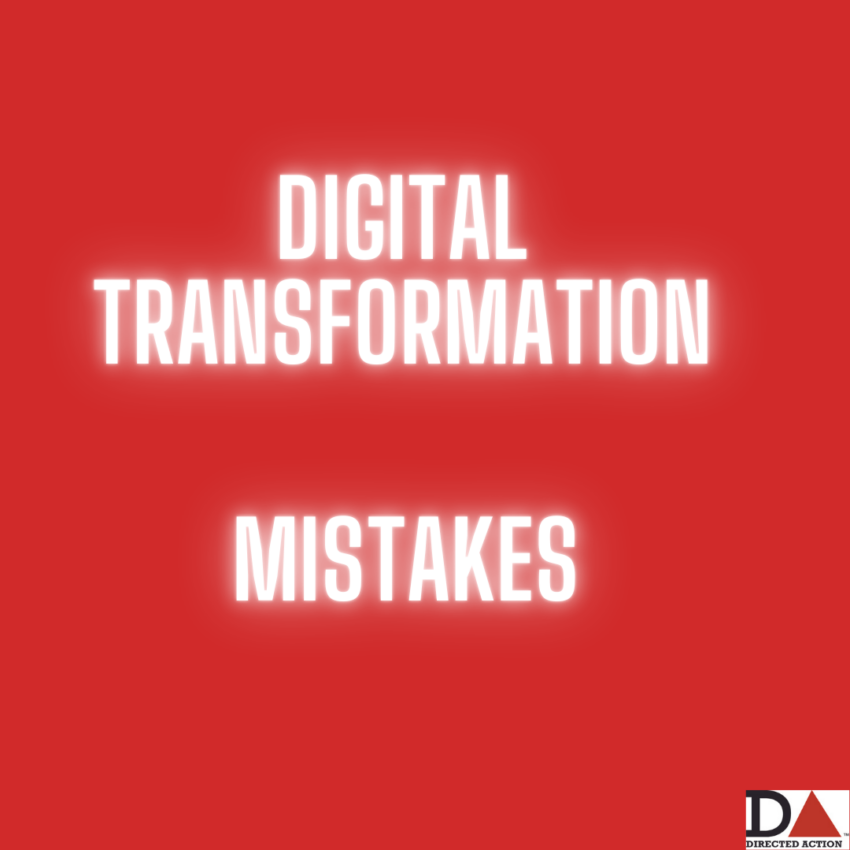Digital transformation promises to enhance efficiency, drive innovation, and propel businesses into a tech-driven future. Yet, when poorly managed, it can lead to massive failures, leaving companies scrambling to recover. These failures offer critical lessons on the importance of thorough planning, strategic leadership, and a robust risk mitigation framework.
In our post at the beginning of the year, we examined the pace of technological change, emphasizing how quickly companies must adapt. However, moving too fast or without proper strategy can lead to catastrophic failures. Here are some of the most notorious digital transformation disasters that serve as cautionary tales for businesses navigating the complex world of technology.
1. The Unintended Collapse of Blockbuster
Blockbuster is perhaps the most infamous example of a digital transformation fail. Once a giant in the video rental industry, Blockbuster failed to recognize the transformative power of digital streaming technology. They passed on a chance to purchase Netflix, dismissing it as a niche service. Their inability to shift from a physical store model to digital platforms led to their downfall, as Netflix’s technology evolved and consumer behavior shifted rapidly toward digital content.
Lesson: Don’t underestimate the impact of technological disruption or fail to embrace digital trends until it’s too late.
2. Target’s Costly Canadian Expansion
When Target expanded into Canada, it implemented a rapid digital transformation of its supply chain management system. Unfortunately, the technology wasn’t tested thoroughly, leading to incorrect inventory levels and delays in stocking stores. On top of this, Target underestimated the complexity of Canada’s retail market and over-reliance on technology to smooth out logistical problems. The company lost billions, eventually pulling out of the Canadian market altogether.
Lesson: No amount of digital innovation can compensate for inadequate testing and understanding of market conditions.
3. Hershey’s Halloween Meltdown
In 1999, Hershey’s attempted a significant overhaul of its IT infrastructure just before its peak season: Halloween. Instead of waiting until after the busy season, the company went live with its new system and faced severe operational disruptions. Hershey’s couldn’t fulfill orders on time, causing them to miss out on an estimated $100 million in sales and damaging relationships with retailers.
Lesson: Timing is everything. Digital transformation should be meticulously planned to avoid implementation during critical business periods.
4. Lidl’s SAP Disaster
The German supermarket chain Lidl invested seven years and over $500 million into implementing SAP’s new inventory management software. Unfortunately, the system clashed with Lidl’s existing process, and no amount of patching could bridge the divide. Ultimately, Lidl abandoned the project, writing off a massive loss. This case highlights how a lack of alignment between technology and business processes can doom even the most well-funded transformations.
Lesson: Technology should align with business processes, not the other way around. Customization is critical for successful transformation.
5. Nike’s Inventory Management Misstep
Nike’s digital transformation disaster occurred in the early 2000s when they attempted to modernize their inventory management system. A software glitch created a mismatch in inventory, causing a shortage of popular products and an overstock of less-desirable items. The issue led to $100 million in lost sales and a sharp decline in stock prices.
Lesson: Pay attention to system integration and data management. A minor error in a digital transformation project can lead to significant financial and reputational damage.
Final Thoughts
Digital transformation is necessary, but it’s fraught with potential pitfalls. Whether it’s failing to understand customer needs, underestimating the complexities of technology implementation, or moving too fast without proper planning, these examples show how quickly things can go wrong.
As technology continues to evolve rapidly, businesses must be more agile, thoughtful, and strategic in their digital transformation efforts. The lessons learned from these catastrophic fails highlight the need for clear vision, careful planning, and alignment between technology and business goals. When companies get it wrong, the cost can be devastating.
By taking these cautionary tales into account, organizations can avoid the same mistakes and instead leverage digital transformation for sustainable growth and success.




